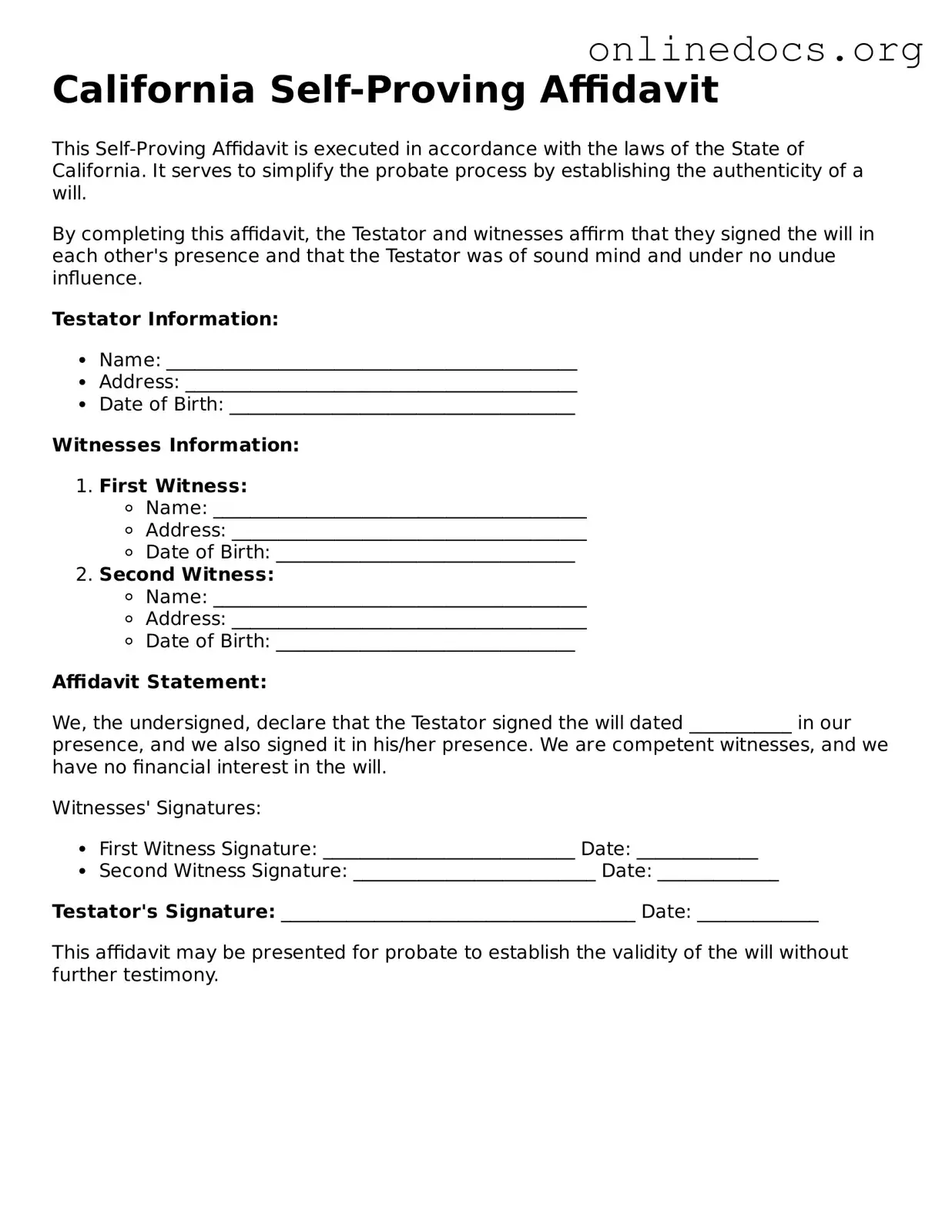Filling out the California Self-Proving Affidavit form can be a straightforward process, but many people make common mistakes that can lead to complications down the line. One frequent error is not signing the document in the presence of a notary public. The purpose of the affidavit is to affirm the validity of a will, and without proper notarization, the document may not hold up in court.
Another mistake occurs when individuals fail to include all required information. Each section of the form must be completed accurately. Omitting details, such as the date of the will or the testator’s name, can render the affidavit ineffective. Always double-check that every box is filled in before submission.
Many people also overlook the importance of having witnesses present during the signing. The California Self-Proving Affidavit requires the signatures of at least two witnesses. If this step is ignored, it can lead to disputes regarding the will’s legitimacy.
Additionally, some individuals may not understand the difference between a self-proving affidavit and a regular affidavit. A self-proving affidavit specifically affirms the authenticity of a will, while a regular affidavit may serve different purposes. Confusing these terms can lead to the wrong document being submitted.
Errors in the witness signatures can also pose a problem. Witnesses must sign the affidavit in the presence of the testator and the notary. If they sign at different times or locations, the affidavit may be challenged. It's crucial to ensure that all parties are present during the signing process.
Another common mistake is using outdated forms. Laws and requirements can change, so always ensure that you are using the most current version of the California Self-Proving Affidavit. Using an old form can lead to legal complications that may have been avoided.
People often forget to keep copies of the completed affidavit. After filing, it’s essential to have a record of what was submitted. This can help resolve any future disputes regarding the will or the affidavit itself.
Some individuals might also fail to consult legal counsel when necessary. While the form may seem simple, the implications of mistakes can be significant. Seeking professional guidance can help ensure that the affidavit is completed correctly and in accordance with California law.
Lastly, individuals sometimes rush through the process, leading to careless mistakes. Taking the time to carefully read each section and verify all information can prevent errors that could invalidate the affidavit. Patience and attention to detail are key when completing this important legal document.
